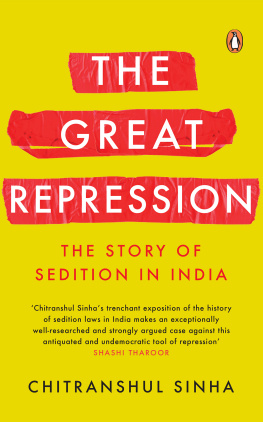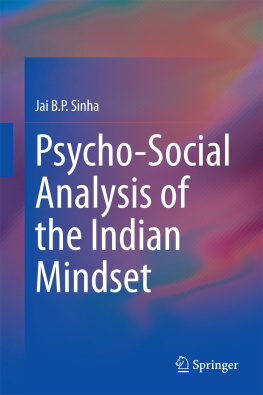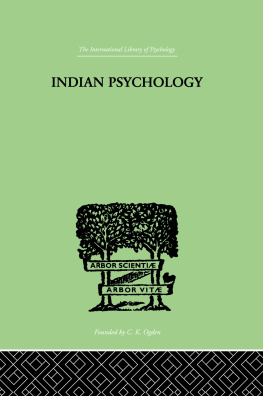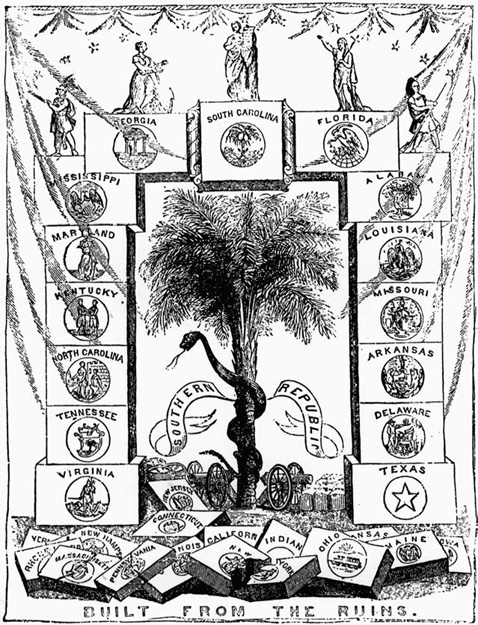1. South Carolina Districts and Parishes in 1860
2. South Carolina Black Belt, 1830
3. South Carolina Black Belt, 1850
1. South Carolina Population, 18201860
2. Election for the State Legislature, 1832
3. Election for the Southern Congress, 1851
ACKNOWLEDGMENTS
As anyone who has written a book knows, the people who help alleviate a lonely and usually arduous task deserve special gratitude. I would like to thank the librarians and staff of Columbia University, the University of South Carolina, the South Carolina Department of Archives and History, the South Carolina Historical Society, the Charleston Library Society, Duke University, the University of North Carolina, Chapel Hill, the Library of Congress, the American Antiquarian Society, the College of the Holy Cross, Harvard University, and the University of Massachusetts, Amherst, for their invaluable help and assistance. I would like to thank Dr. Allen Stokes and his staff at the South Caroliniana Library for putting up with the Indian woman who virtually set up camp in their premises. I must single out Mrs. Thelma Hayes for her cheerfulness and patience. Bob Henry from the computer laboratory at Holy Cross deserves special thanks for helping me to design the maps.
The Institute of Southern Studies, University of South Carolina, provided me with much needed institutional support and with luxurious accommodations at Gibbes Court while I was doing research. For that I would like to thank its erstwhile director, Dr. Walter Edgar, and secretary, Ms. Tibby Dozier. I would also like to thank Mark Malvasi and Professor Clyde Wilson for allowing me to go through the unpublished Calhoun papers. It gives me great pleasure to thank Omi and Binu Hasija of Charleston and Indu and Nikki Singh of Fairfax, Virginia, for keeping up the traditions of Indian hospitality in their adopted country. And I would like to thank my aunt and her husband, Abha and Amit Sawhney, for always welcoming me into their home in New York City.
Several sources of financial support helped me to research and write the book and the dissertation on which it is based. A year-long writing grant from the Mrs. Giles Whiting Foundation for the Humanities, administered by Columbia University, helped me to write the dissertation. A fellowship from the W. E. B. Du Bois Institute for Afro-American Research at Harvard University, a Rockefeller Post-Doctoral Fellowship in the Humanities from the Institute for the Arts and Humanities at the University of North Carolina at Chapel Hill, and a research fellowship from the American Philosophical Society in Philadelphia helped me to convert an unwieldy dissertation into a book manuscript. I would particularly like to express my gratitude to Henry Louis Gates Jr. of Harvard University and James Peacock of the University of North Carolina at Chapel Hill for their support and generosity. I would also like to thank my research assistants at the Du Bois Institute, Greg Supriano and Susan Wyly.
Several people have commented on this manuscript and its earlier incarnations. I would like to thank Elizabeth Blackmar and the history dissertation seminar at Columbia University for going through a rather large draft of my first two chapters. Patrick Williams and Nancy Cohen provided especially useful comments. Drew Faust, Elizabeth Fox-Genovese, and Eric Walther raised good questions on the introduction and certain sections of the book. Bertram Wyatt-Brown wrote a lengthy criticism of the manuscript for which I am grateful. Michael P. Johnson and Peter Coclanis commented perceptively on the manuscript for the University of North Carolina Press and forced me to clarify my arguments and learn the virtues of brevity. It has been a pleasure to work with Lewis Bateman at the University of North Carolina Press. His vast experience with the publishing business and adept handling of the manuscript have made this a considerably better book.
I owe my greatest intellectual debt to two of my former teachers at Columbia. A very special acknowledgment goes out to Barbara Fields James, whose understanding of southern history I can only hope to acquire some day. Barbara has been a great source of intellectual inspiration and friendship from the start. Her wonderfully crafted criticism of the dissertation was my template for working on the book manuscript. Above all, I would like to thank my adviser and mentor, Eric Foner. It has been my enormous privilege to study with a historian whose works I so admire and respect. Eric read through countless versions of the manuscript, provided detailed and brilliant criticisms, and has supported this project from start to finish. I am sure he will be amused to learn that he is the embodiment of the original Indian concept of a guru: a scholar, a teacher, and a humanist par excellence.
I would like to thank my colleagues at the University of Massachusetts, Amherst, for their support: John Bracey, Esther Terry, Ernie Allen, Robert Wolff, Femi Richards, Mike Thelwell, Bill Strickland, and Steve Tracy of Afro-American studies and Bruce Laurie, Kathy Peiss, John Higginson, Joye Bowman, and Leo Richards of the history department. Members of the Five College Social History Seminar, especially David Blight of Amherst College, provided thoughtful comments and encouragement. Several current and former graduate students have helped me to write a better book, especially those who read and commented on the manuscript in my Politics of Slavery seminar. They are: Shawn Alexander, Patrick Crim, Germaine Etienne, Julie Gallagher, Richard Gassan, Peter Lau, Chris Lehman, Dinah Mayo, Tanya Mears, Ken Miller, Carolyn Powell, Andrew Rosa, James Ross, and R. Paul Spring.





